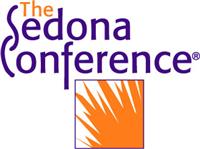 Customer service reps (CSRs) are on the front lines of your organization and are in the unique position of acquiring valuable information from your most valued customers, every day. In fact, they may be a customer’s first, and only, contact with your business. Much of this correspondence is taking place over email, which is not being shared with other departments.
Customer service reps (CSRs) are on the front lines of your organization and are in the unique position of acquiring valuable information from your most valued customers, every day. In fact, they may be a customer’s first, and only, contact with your business. Much of this correspondence is taking place over email, which is not being shared with other departments.
If customer service correspondence with customers is well-documented and shared with sales, marketing, product management, and possibly even accounting, the company can gain a competitive advantage from this market information. However, these people don’t need to be copied on every email.
How can organizations manage customer service correspondence effectively? Fortunately, third-party email correspondence modules like Email Manager from CMA now offer a way to ensure all relevant customer service email and attachments are coupled with other records in your document management system.
Customer Service Records Retention
Below is a table that illustrates best practice retention requirements for customer service records:
| Records | Retention Requirement (years) |
|
5 |
So with all these records, what are the five challenges for customer service?
The Top 5 Challenges for Managing Customer Service Email Correspondence
- 90% of all business correspondence is conducted via email – while the client might call, the CSR is likely recording the issue electronically and then emailing the resolution to their supervisor or another department within the organization.
- All correspondence with customers should be considered a business record or document.
- Correspondence isn’t associated with the documents they reference – this can be done by customer name, customer number or order number we need to provide the methodology for doing so.
- Classification, filing, and archiving email with current technologies are unorganized.
- Critical email correspondence isn’t integrated with existing back-end systems
Extend Outlook & Document Management with Email Correspondence Management
Email Manager from CMA addresses these issues by adding value to, and empowering your CSRs by providing a simple solution for documenting customer correspondence and archiving it alongside customer records for future reference.
Within the native Outlook client, an email can be tagged once based on the nature of the conversation and then tracked for archiving. Custom fields such as account number and reason for contact can be applied within the Outlook interface to classify and capture critical correspondence in addition to subject, to, from, date, etc. Even when a customer outside your network replies, the software maintains the integrity of the indexes.
Email Manager automatically stores messages to the designated repository in a single, secure location alongside other supporting documentation about the customer. Continuity and historical access are automated, improving your records as well as enhancing customer service.


